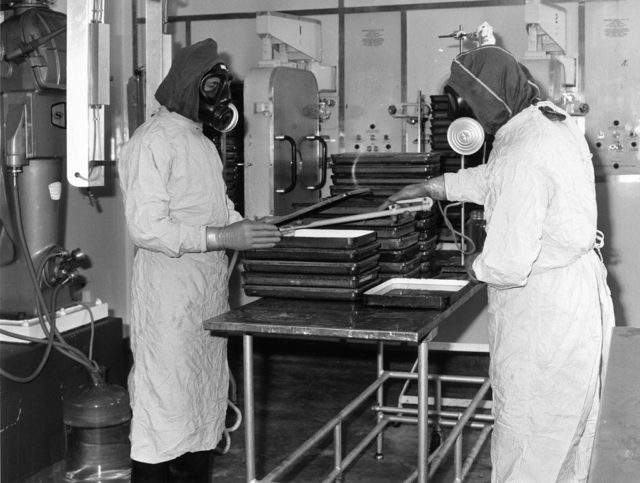Many countries have top-secret research facilities full of scientists conducting experiments that the public isn’t allowed to know about. While Porton Down in the United Kingdom is a research facility, it is very well known – and certainly not for positive reasons. Home to controversial experiments, biological weapons, and the world’s most dangerous substances, Porton Down is the world’s oldest chemical warfare research facility.
War Department Experimental Station
Porton Down was opened during the First World War in response to Germany’s use of chemical weapons. Chemical weapons caught most countries entirely off guard. The UK created this facility to research the new gases being used against their soldiers and to look into making their own. Their other major focus was to create better respirators for soldiers, and figure out how to defend against gas attacks.



By the time the war ended, there were over 1,100 people housed on the property, but this quickly declined. It wasn’t until the government decided to approve more chemical weapon research in 1920 that the program was slowly built back up with both military and civilian staff. The primary purpose of Porton Down at this time was to develop a reserve supply of chemical warfare agents, and further their understanding of them.
Interwar period
The scientists worked on many projects, the most infamous being the Rawalpindi experiments. A Porton Down team was sent to Rawalpindi, now located in Pakistan, to test the effects of mustard gas on over 500 members of the British Indian Army over 10 years. The goal was to determine how much gas the British should use in battle. The ‘volunteers’ went into gas chambers wearing only respirators and no other protective equipment.



As you can imagine, the results were disastrous. The men suffered severe burns, many of which required hospitalization. To make matters worse, the Porton Down scientists conducted no follow ups to see what effect the gas exposure had on these men in the long run, given that mustard gas is now well-known as a carcinogen. When the Second World War began, the mission of Porton Down changed very little.
Second World War
They continued their research on chemical weapons, this time working on the development of nitrogen mustard. They were also responsible for examining the weapons that other countries possessed. For example, the Allies found that Germany possessed many nerve agents that the UK knew nothing about, so it fell to the scientists at Porton Down to investigate them. As for biological weapons, the top-secret Biology Department was created in 1940.



Among other things, the team working there focused on the toxins botulinum and anthrax. They carried out a test on the uninhabited island of Gruinard where an anthrax bomb was detonated on 80 sheep so that they could see whether a weapon of this kind worked. The island became so contaminated that they couldn’t get rid of the spores – so the scientists determined this was an effective way to attack German cities. In fact, the island wasn’t properly decontaminated until 1990.
Until the present
When the war ended, Porton Down continued with its research. In 1952 they created the VX nerve agent, based on the German versions they found during the war. They continued to conduct nerve agent tests on human subjects, but they also started working on the development of CS, a form of tear gas that could be used to control riots. The facility also became home to numerous deadly bacteria and viruses.



One of these was the black plague, which killed a scientist in 1962 after he was accidentally infected. This were also one of the first labs to be sent samples of Ebola in the late 1970s, which they still have. In 2018 they were involved in the Salisbury poisonings, analyzing the then-unknown substance – identified as a nerve agent – which Yulia and Sergei Skripal were dosed with. At the present, Porton Down is still used to test scientific developments for both civilians and the military.
Public backlash
Porton Down has received significant public backlash for its scientific methods on many occasions. There were many protests against the use of animals as test subjects, something which the facility is now supposedly cutting back on. The main objection to the facility, however, was its use of human participants. In the case of the Rawalpindi experiments, as with countless other experiments conducted on ‘volunteers,’ many people came forward to say that they hadn’t consented to what was done.



Although this was scarily common, there were some notable cases that caught public attention. One of these was the death of Royal Air Force engineer Ronald Maddison who died after liquid nerve gas was dropped on his arm in 1953. Another was when three servicemen were given LSD in the 1950s without their knowledge or consent.
More from us: Winston Churchill Planned Britain’s Wartime Strategy In the Cabinet War Rooms
On all accounts, the Ministry of Defense was found liable and forced to pay damages.
